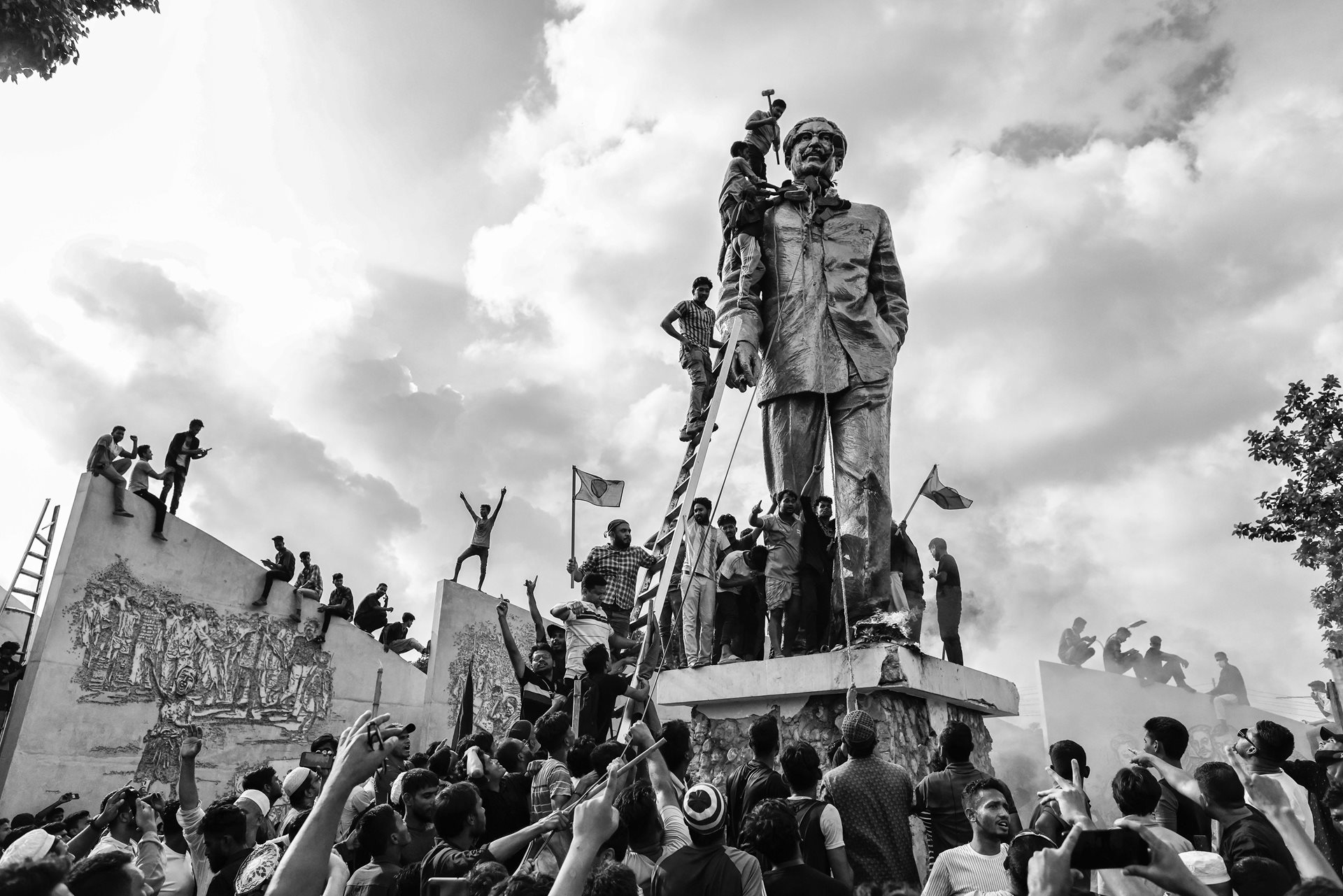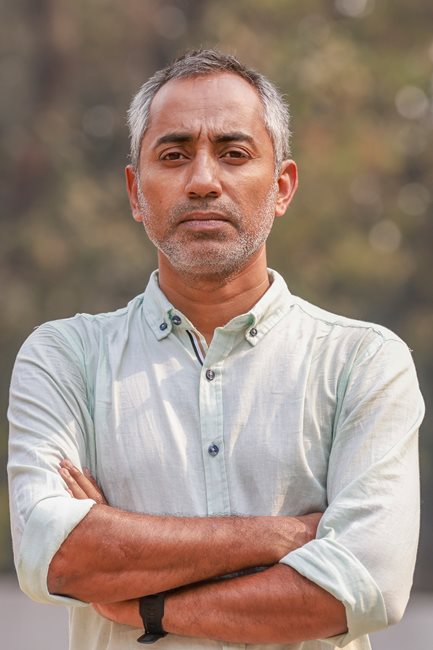People vandalize a statue of former Bangladesh president, Sheikh Mujibur Rahman, the father of Prime Minister Sheikh Hasina, who had resigned following weeks of unrest, in Dhaka, Bangladesh.
A July 2024 student protest in Bangladesh escalated into a mass uprising against a government accused of unlawful detentions, enforced disappearances, and widespread suppression of dissent.
The initial protest was led by students angry at the reinstatement of a job quota scheme which left just 3,000 positions open for the 400,000 graduates who compete in the civil services exams. Although initially peaceful, demonstrations became violent after authorities and pro-government paramilitaries cracked down on protesters. The Chhatra League (the student wing of the ruling Awami League party) and the Rapid Action Battalion (a controversial group with a history of extrajudicial killings, torture, and enforced disappearances) began attacking students with tear gas and live bullets, with support from the police. A UN investigation estimates that the protests left as many as 1,400 people dead in just 46 days, the vast majority shot by security forces.
The unrest took place against a backdrop of struggles for fair elections, and a cyber-security law seen to erode freedom of speech. A January 2024 election had returned Hasina to office, but was characterized by low voter turnout, an opposition boycott, and the arrest of more than 10,000 opposition leaders and supporters. The 2023 cyber-security law built on previous repressive legislation to give authorities sweeping powers to detain people and seize their devices, and to block cyber-space content. It was weaponized to target journalists, human rights defenders and dissidents.
By August, the regime had collapsed. Prime Minister Sheikh Hasina resigned and went into exile, and army chief General Waker-Uz-Zaman announced the formation of an interim government.
Are you a photographer and/or passionate about press freedom? Sign up for our newsletter to stay updated on our annual contest and to hear about exhibitions near you.

